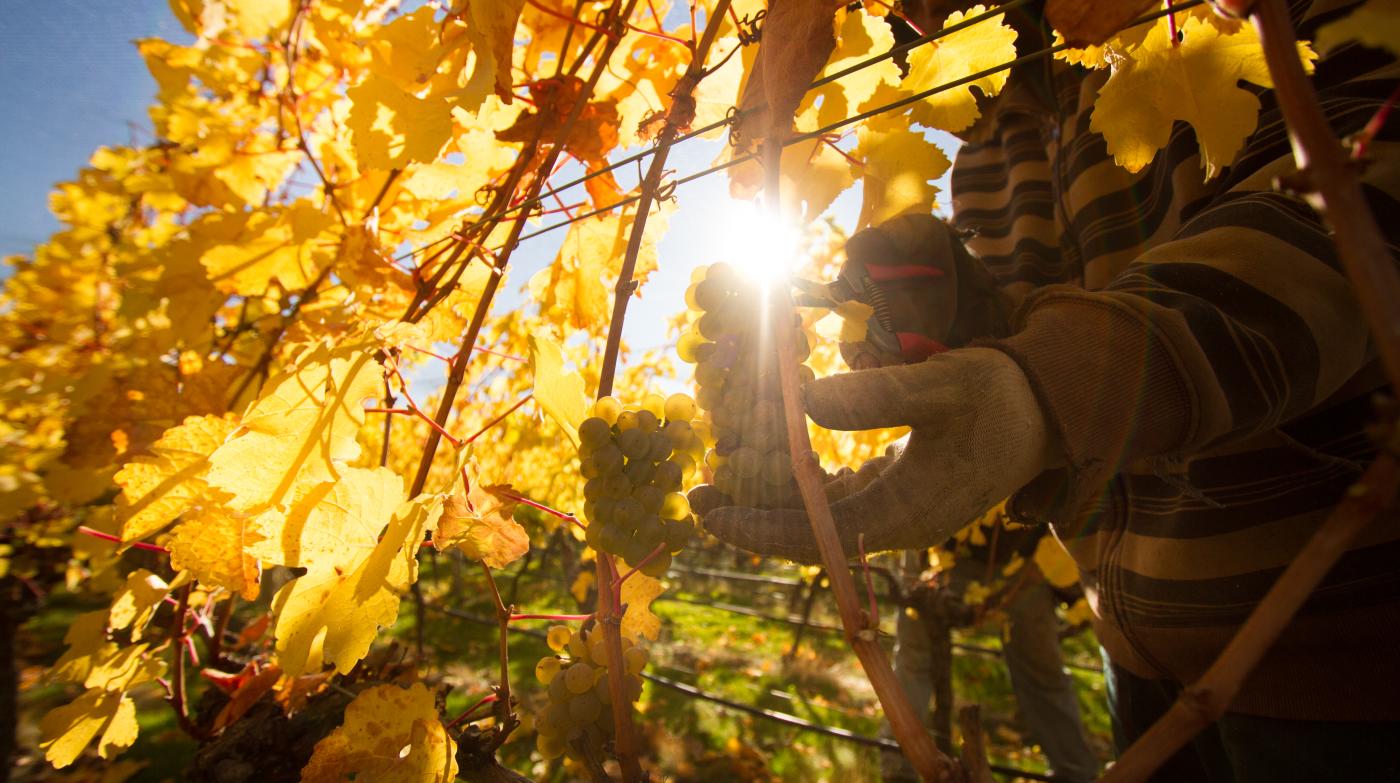Underlying both is the passion of the people who made it happen; winemakers who have spent years honing their craft and who live and die by the grape. It’s all too easy to forget about that at the other end of the process when it’s sitting there in a bottle in front of us, as good as it can be, ready for our indulgence and enjoyment.
Queenstown is the gateway to the Central Otago wine region which has 200 vineyards within a 90-minute radius. There are six sub-regions and Gibbston, 25km away from Queenstown's centre, is the closest to the city. Hot days, cool nights, and interesting soil profiles (think fine sand, heavy silt loam and rocky schist) are great for growing Pinot Noir, and this varietal makes up about 85 per cent of the region’s wine output. Chardonnay, Pinot Gris and Riesling make up the majority of the rest.
Being the most southerly grape-growing region in the world, at a latitude of 45͒ south, throws up a few challenges when it comes to the annual Queenstown region grape harvest in the last week of April. It’s always a race against the seasons and means all hands on deck and then some for the vineyards as the fruit starts flowing. Contract workers are brought on board to get everything done in the time scheme planned by the winemakers so the grapes can be picked exactly when they want them, before the chilly mornings start to bite.

Late harvest, Gibbston
The best-laid plans can be upset with unpredictable weather patterns: if a cold snap hits it slows down the ripening process so harvest takes place later. The usual six weeks of picking might have to be squeezed into four or five, making it a stressful time for everyone. Likewise, if the late summer is particularly warm the grapes will ripen too fast, meaning they have to be picked earlier. Every year throws up different conditions, and the winemakers and their teams need to be ready to spring into action.
“Mostly frost events force us to pick, otherwise we pick when we believe the fruit is ready,” says local winemaker Lynn Horton.
“We don’t have disease pressure due to long rain events, like some regions face. We also keep the vineyard disease-free all year which also prevents us having to pick earlier.”
Once the grapes are picked, they’re delivered to the winemaker to be processed. Each variety is handled differently: for white wine, the grapes are pressed and the juice drained to barrels or steel vats for fermentation. For reds, the fruit is fermented with its skin on. For some, the winemaking process begins immediately because the vineyard has a winery on site.
“You need to make decisions about the style of wine you are wanting to achieve while respecting the fruit that you have, and not trying to make it something it shouldn’t be,” says Lynn.
The most important person in the vineyard is the viticulturist, as he determines the overall quality of the wine, right from the buds bursting in spring, through to the moment the grapes reach the winery.
"In the new world, viticulturists do not get the credit or exposure they deserve so we try and fly their flag high when possible,” Horton says. “The first thing you’re taught when studying winemaking or viticulture is that great wine is made in the vineyard.”

Harvest is also an opportunity for young, keen people (usually graduates) who want to break into the wine industry to learn from the ground up, and there is always a legion of interested workers, the winemaker says.
They’re local and international, moving from Northern Hemisphere harvest to Southern in a bid to gain experience as quickly as possible. "These workers provide the backbone of harvest time then move on afterwards.”
If you’re interested in the process, stop by a winery around this time and you’ll more than likely find a passionate employee happy to share their knowledge.
Who knows, you might even be inspired to give it a go yourself.
